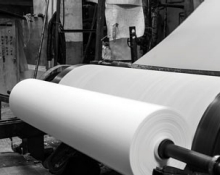Canadians identify with their forests. Their serenity and majestic beauty are balanced with the fact they are one of Canada’s most important resources, providing the world’s largest exports of pulp (plant matter) and paper. This comes at a cost, however, as the pulp and paper industry produces a large amount of wastewater containing pollutants.
Treating this wastewater to remove contaminants also has a downside, as this process itself generates greenhouse gases (GHGs), including carbon dioxide, methane and nitrous oxide. “It’s an interesting dilemma,” says Omid Ashrafi, PhD 12. “There is a large amount of wastewater that needs to be decontaminated using treatment processes with minimum environmental impacts.”
Determining how to address this problem was the focus of Ashrafi’s doctoral thesis. He completed his studies in Concordia’s Department of Building, Civil and Environmental Engineering under the supervision of professors Fariborz Haghighat and Laleh Yerushalmi.
Water treatment and reuse
The pulp and paper industry is the third largest producer of wastewater. As water is precious, regulatory organizations have asked for improved water reuse and greater efficiency in wastewater treatment. Enter the wastewater treatment plant (WWTP) — which emits greenhouse gases while turning the brown, sludgy waste into clear water that is ready for reuse.
Greenhouse gases are a worry because of their contribution to the global greenhouse effect — a process where greenhouse gases absorb the earth’s heat and bounce it back to the surface, causing a warming effect. Estimating the type and amount of greenhouse gases produced during wastewater treatment is not easy, yet it is essential for rational decisions on how best to handle this waste. With expertise in math — and with determination — Ashrafi set out on the path to better predict greenhouse gas production.
“An important goal of environmental management is to reduce the generation of GHGs, as well as the energy consumption of WWTPs. Determining the best model for achieving this was a very interesting challenge,” he says.
Dynamic modelling is key


 Omid Ashrafi
Omid Ashrafi

 Fariborz Haghighat and Laleh Yerushalmi
Fariborz Haghighat and Laleh Yerushalmi